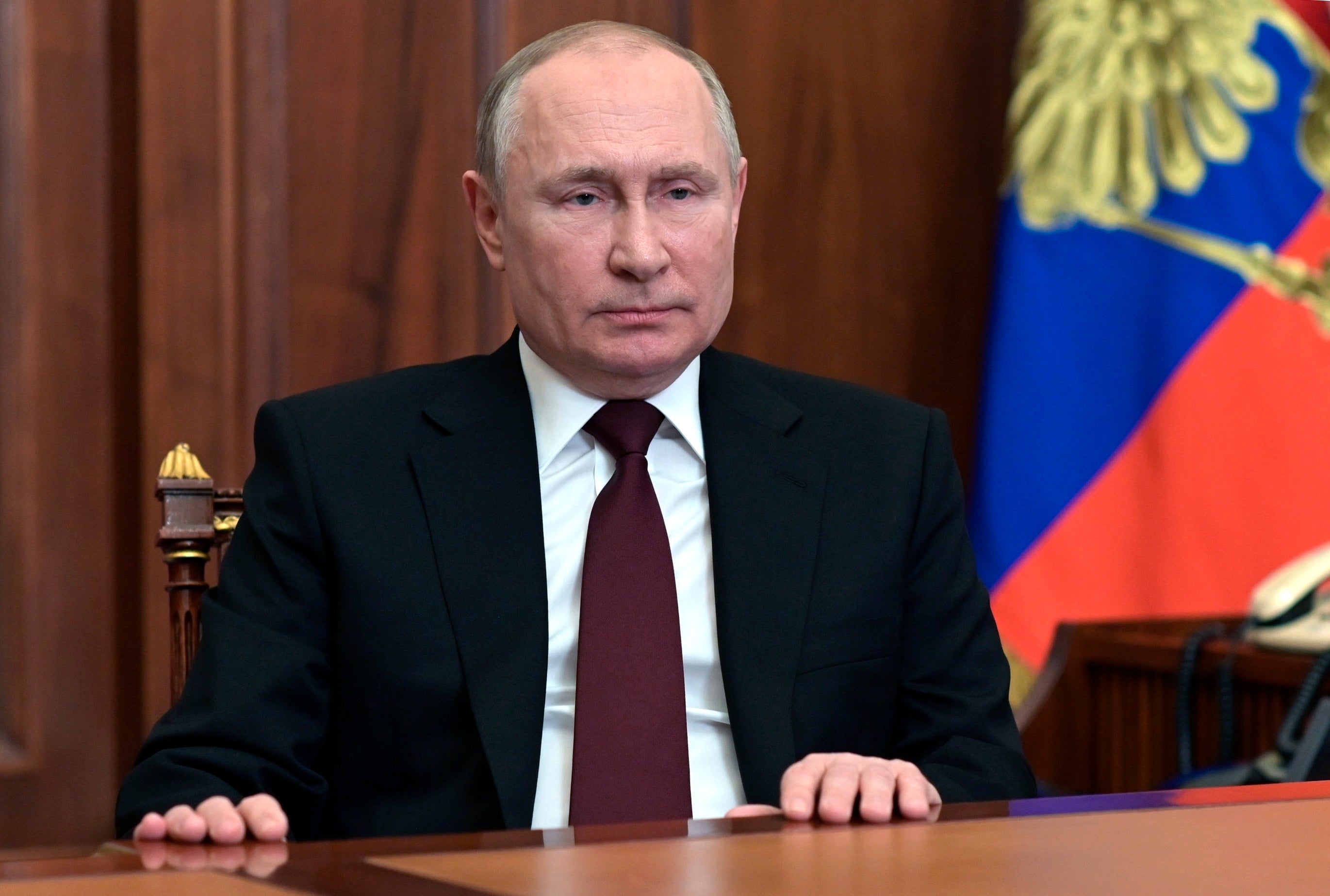Vladimir Putin has painted a foreboding picture of what lies ahead in Ukraine
Analysis: Russian president’s announcement makes efforts to find a diplomatic solution to the crisis more difficult

Your support helps us to tell the story
From reproductive rights to climate change to Big Tech, The Independent is on the ground when the story is developing. Whether it's investigating the financials of Elon Musk's pro-Trump PAC or producing our latest documentary, 'The A Word', which shines a light on the American women fighting for reproductive rights, we know how important it is to parse out the facts from the messaging.
At such a critical moment in US history, we need reporters on the ground. Your donation allows us to keep sending journalists to speak to both sides of the story.
The Independent is trusted by Americans across the entire political spectrum. And unlike many other quality news outlets, we choose not to lock Americans out of our reporting and analysis with paywalls. We believe quality journalism should be available to everyone, paid for by those who can afford it.
Your support makes all the difference.The meeting Vladimir Putin convened of Russia’s security council started when there was fresh hope that diplomacy may yet prevail to avert a war in Europe.
Emmanuel Macron had a telephone call with the Russian president which was said to be positive, meetings were due between Sergei Lavrov and the US secretary of state Antony Blinken and the French foreign minister Jean-Yves Le Drian later in the week, and there was the chance of another summit between Joe Biden and Mr Putin.
But by the time Mr Putin finished his speech following the security council session, the hopes of a peaceful resolution to the crisis were close to being in tatters.
Mr Putin recognised the “Peoples Republics” of Donetsk and Luhansk as independent states, something Moscow has not done for the last eight years since they were formed. One of the results of this would be that Russian troops can now be sent openly rather than surreptitiously, into these separatist enclaves.
But it was also the other pronouncements he made during his 58-minute television appearance which presented a dark and foreboding picture of what lies ahead.
Ukraine, said Mr Putin, was never a “genuine state”; its “corrupt” regime was a “puppet” of the US and the country becoming a part of Nato would be a “direct threat to the security of Russia”.
Ukraine must stop violence against the “Peoples Republics” or face “responsibility for bloodshed which will follow”, said Mr Putin. The “violence” that he refers to, as those of us who have been covering the Donbas know, are “false-flag” operations designed to blame the Ukrainian state for actions carried out by the separatists.
Giving Ukraine an ultimatum to stop doing what it is not doing is similar in many ways to the one given by George Bush, Tony Blair and the Spanish prime minister Jose Maria Aznar to Iraq to reveal its non-existent Weapons of Mass Destruction in the run-up to the 2003 invasion.
Apologists for that war may say Mr Bush and Mr Blair did not know that Saddam Hussein did not have WMDs. But there is more than enough evidence to refute that. My abiding memory, while reporting from the country at the time was the last dinner held by the UN inspectors, whose head pointed out that Washington and London wanted them to leave because of “what they may not find”.
Presenting Ukraine as an artificial construct which is really a part of Russia would, in Moscow’s eyes, mitigate any military action it might take. It is the US and Nato which has turned Ukraine into a “theatre of war” said the Russian president. This is relevant in the context of the repeated western assertion that capturing Kiev and carrying out “regime change” remains Mr Putin’s real goal.
There are other scenarios present. The separatists in Donetsk and Luhansk have long declared their hopes of “reuniting” the region. This may mean trying to seize cities including the port of Mariupol, and Kramatorsk – where Ukraine’s army has its eastern headquarters.
This would mean trying to take Ukrainian territory in the Donbas. Moscow can say that any military action was carried out by the “republics” and not Russia.
Meanwhile, the indefinite prolonging of the war games in Belarus means that 32,000 Russian troops would remain there, forcing the Ukrainians to continue stationing forces around Kiev. Similarly Ukrainian forces would have to remain in the south with the build-up of Russian presence in the Azov Sea.
The ball is now very much in the court of the US and west in how it responds to what has happened. Does the “very heavy price” they have been saying Russia would pay is about military action, or would it apply to de-facto annexation of a part of Ukraine.
Join our commenting forum
Join thought-provoking conversations, follow other Independent readers and see their replies
Comments